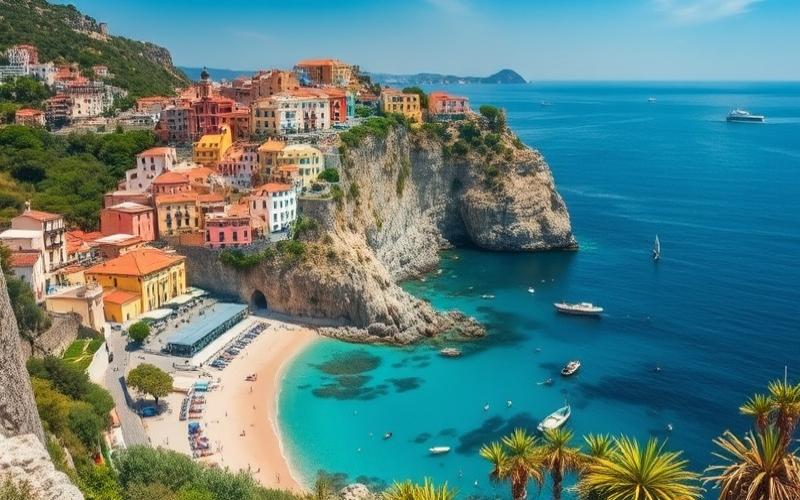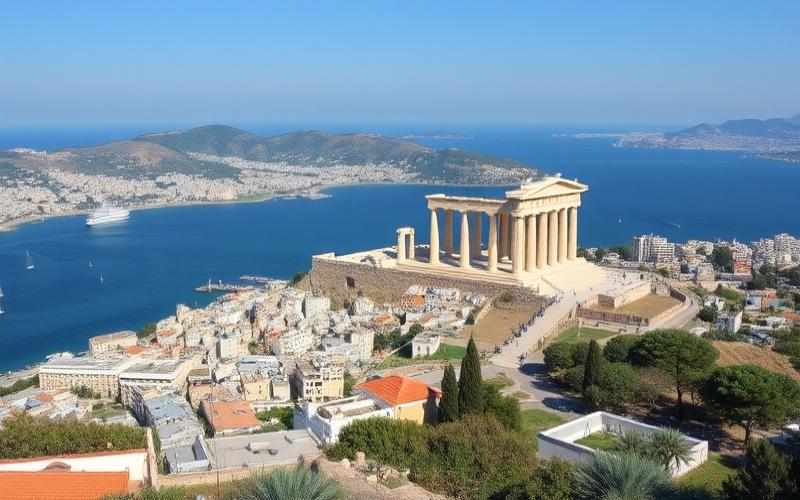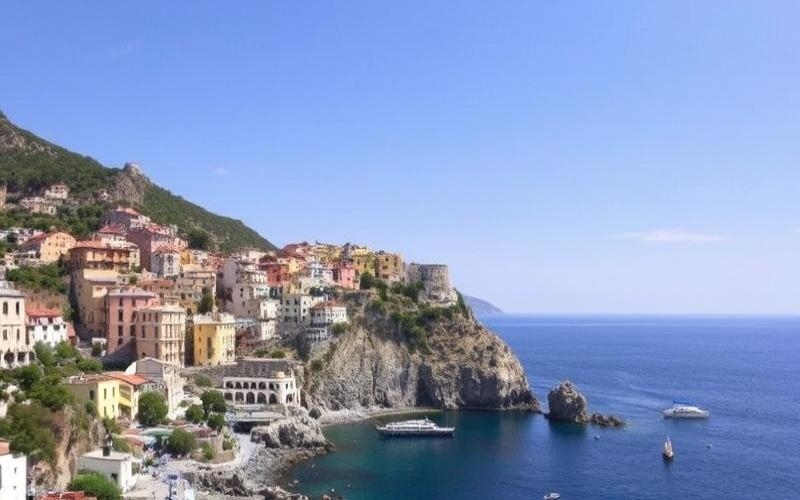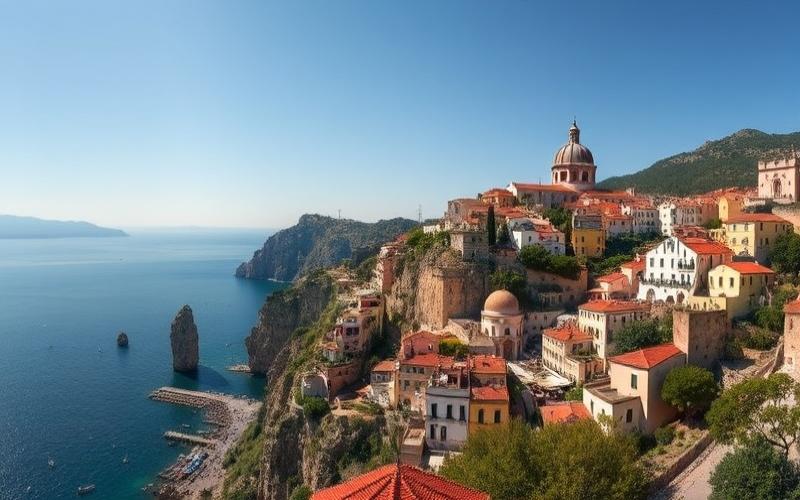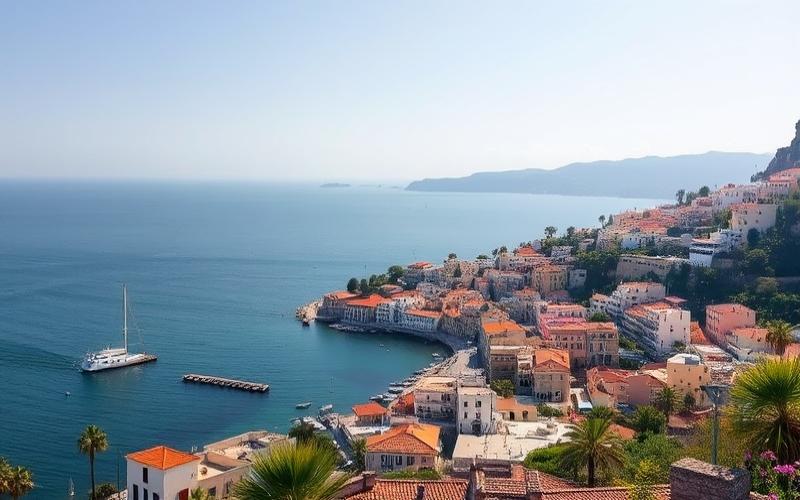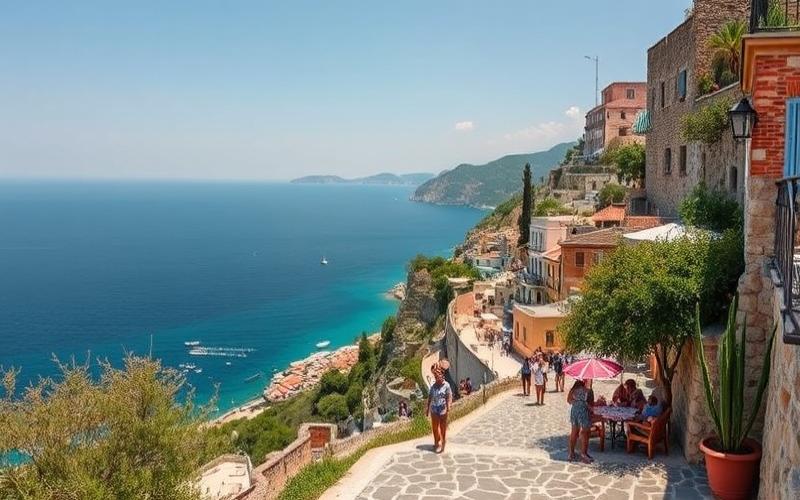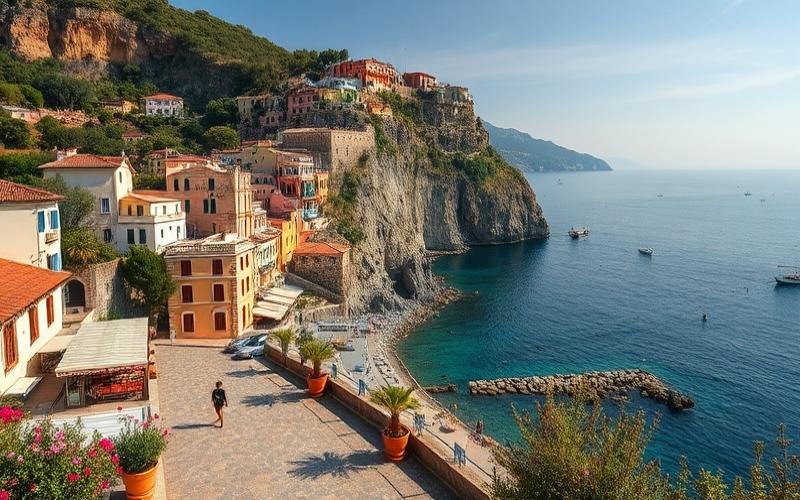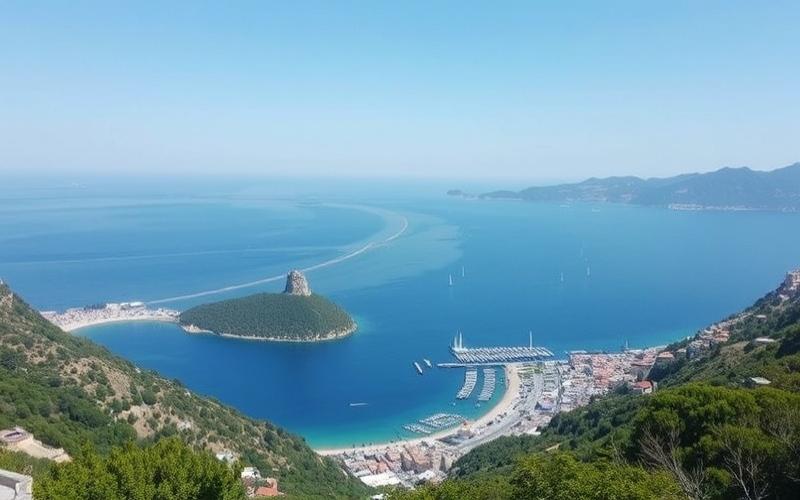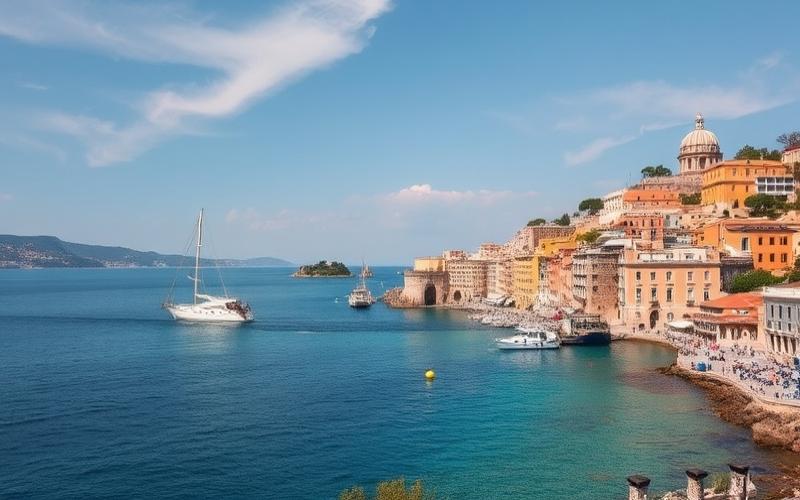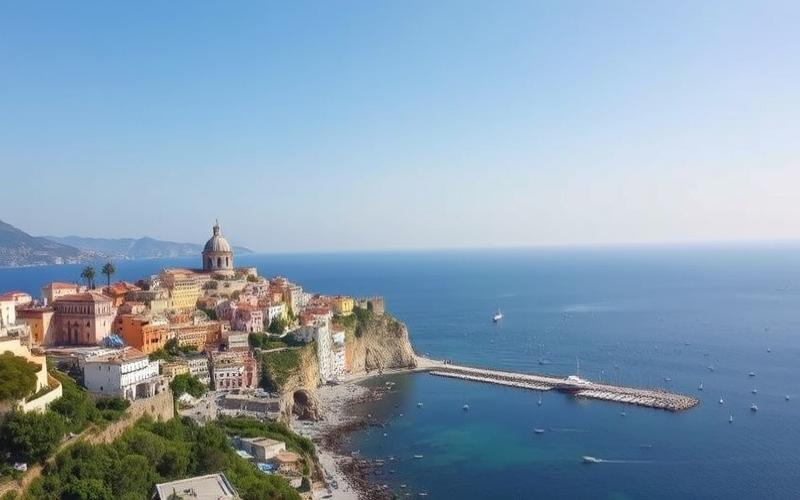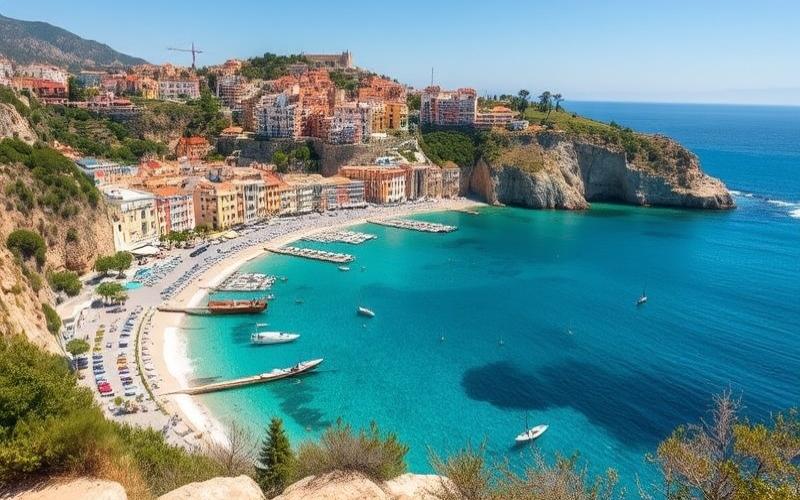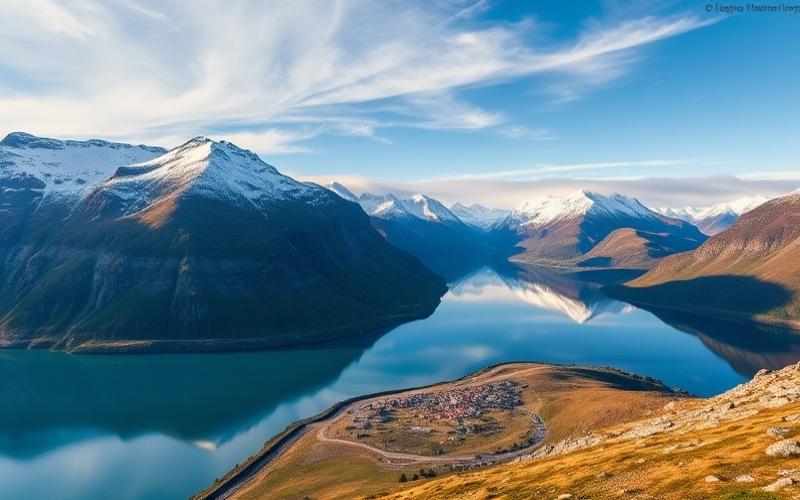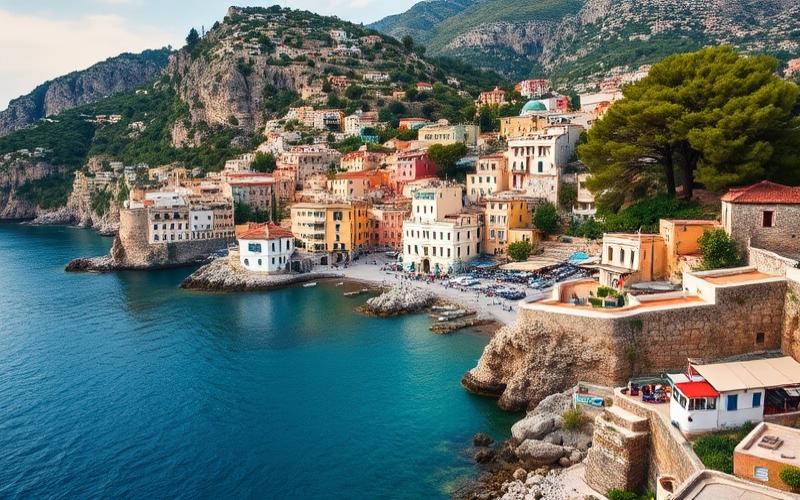
 Published on and written by Cyril Jarnias
Published on and written by Cyril Jarnias
Greece, the cradle of Western civilization, is a fascinating country located at the crossroads of Europe, Asia, and Africa. Its unique geography, blending rugged mountains and indented coastlines, has shaped its millennia-old history and culture. Let’s explore together the main geographical features of this Mediterranean country.
Geographical Location
Greece is situated at the southeastern tip of Europe, occupying the southern part of the Balkan Peninsula. The country spans a total area of 131,957 km², with approximately 20% consisting of islands. Bordered by four seas, Greece boasts one of the longest coastlines in Europe with over 13,000 km of shores.
To the west, the country is washed by the Ionian Sea, while to the east lies the Aegean Sea, dotted with numerous Greek islands. To the south, the Mediterranean Sea borders the coasts of the Peloponnese and Crete. Finally, a small portion of Greece’s northern coastline faces the Adriatic Sea.
Main Regions
Mainland Greece is divided into several distinct regions, each with its own geographical and cultural characteristics:
- Macedonia: mountainous region in the north, with the city of Thessaloniki as its economic center
- Thrace: located in the far northeast, sharing a border with Turkey
- Epirus: mountainous region in the west, known for its spectacular gorges
- Thessaly: vast fertile plain in the center of the country
- Central Greece: mountainous region home to the famous site of Delphi
- Attica: region surrounding Athens, the capital
- Peloponnese: large peninsula in the south, connected to the mainland by the Isthmus of Corinth
In addition to these mainland regions, Greece includes numerous islands grouped into archipelagos:
- Ionian Islands: to the west, including Corfu and Cephalonia
- Cyclades: in the center of the Aegean Sea, including Mykonos and Santorini
- Sporades: northeast of Euboea
- Dodecanese: to the east, near the Turkish coast, with Rhodes as the main island
- Crete: the largest Greek island, located to the south
Main Cities
Athens, the capital, is by far the country’s largest city with a population of approximately 3.7 million in its metropolitan area. As Greece’s political, economic, and cultural center, Athens blends modernity with ancient history, symbolized by the iconic Acropolis overlooking the city.
Other major Greek cities include:
- Thessaloniki: second largest city in the country, important port in northern Greece
- Piraeus: main port of the country, located near Athens
- Patras: third largest city in the country, located in the Peloponnese
- Heraklion: main city of Crete
- Larissa: important agricultural center in Thessaly
Neighboring Countries
Greece shares land borders with several countries:
- To the northwest: Albania
- To the north: North Macedonia
- To the northeast: Bulgaria
- To the east: Turkey (a small land border in Thrace)
Additionally, Greece has maritime borders with Italy to the west, Turkey to the east, and Egypt to the south.
Topography and Climate
The Greek terrain is predominantly mountainous, with nearly 80% of the territory occupied by mountains or hills. The country’s highest point is Mount Olympus, rising to 2,917 meters in elevation. The most important mountain ranges are the Pindus, which crosses the country from north to south, and the Peloponnesian mountains.
Greece’s climate is typically Mediterranean, characterized by hot, dry summers and mild, wet winters. However, mountainous regions experience harsher winters with frequent snowfall.
Good to Know:
Greece’s varied geography, between sea and mountains, offers a great diversity of landscapes and experiences for visitors. From sandy beaches to snow-capped peaks, through olive groves and perched villages, each region has its unique charm to discover.
Impact of Geography on Culture and Economy
Greece’s particular geography has profoundly influenced its history and economic development. The country’s mountainous nature fostered the emergence of isolated communities, each developing its own traditions and dialects. This cultural diversity remains visible today in different Greek regions.
The long coastline and numerous islands naturally oriented Greece toward the sea. Since antiquity, Greeks have been renowned as excellent sailors and merchants. Even today, the maritime sector plays a crucial role in the country’s economy, whether for goods transport, fishing, or tourism.
Tourism, in fact, is one of the pillars of the Greek economy, largely favored by the beauty of the landscapes, the richness of historical heritage, and the mildness of the Mediterranean climate. From the idyllic beaches of the islands to major archaeological sites, through ski resorts in the mountains, Greece offers a wide variety of tourist attractions.
Agriculture, although limited by the rugged terrain, remains important, particularly for the production of olives, wine, and citrus fruits. The fertile plains of Thessaly and Macedonia are the country’s main agricultural regions.
Good to Know:
Greece’s geography has shaped not only its landscape but also its economy and culture. From the historical importance of navigation to the tourist appeal of its islands, geography remains a key element of modern Greek identity.
In conclusion, Greece’s geography, with its unique blend of mountains, seas, and islands, has played a fundamental role in the country’s history and development. This geographical diversity continues to influence the daily lives of Greeks and attracts millions of visitors from around the world each year, fascinated by the beauty and cultural richness of this Mediterranean country.
Disclaimer: The information provided on this website is for informational purposes only and does not constitute financial, legal, or professional advice. We encourage you to consult qualified experts before making any investment, real estate, or expatriation decisions. Although we strive to maintain up-to-date and accurate information, we do not guarantee the completeness, accuracy, or timeliness of the proposed content. As investment and expatriation involve risks, we disclaim any liability for potential losses or damages arising from the use of this site. Your use of this site confirms your acceptance of these terms and your understanding of the associated risks.

